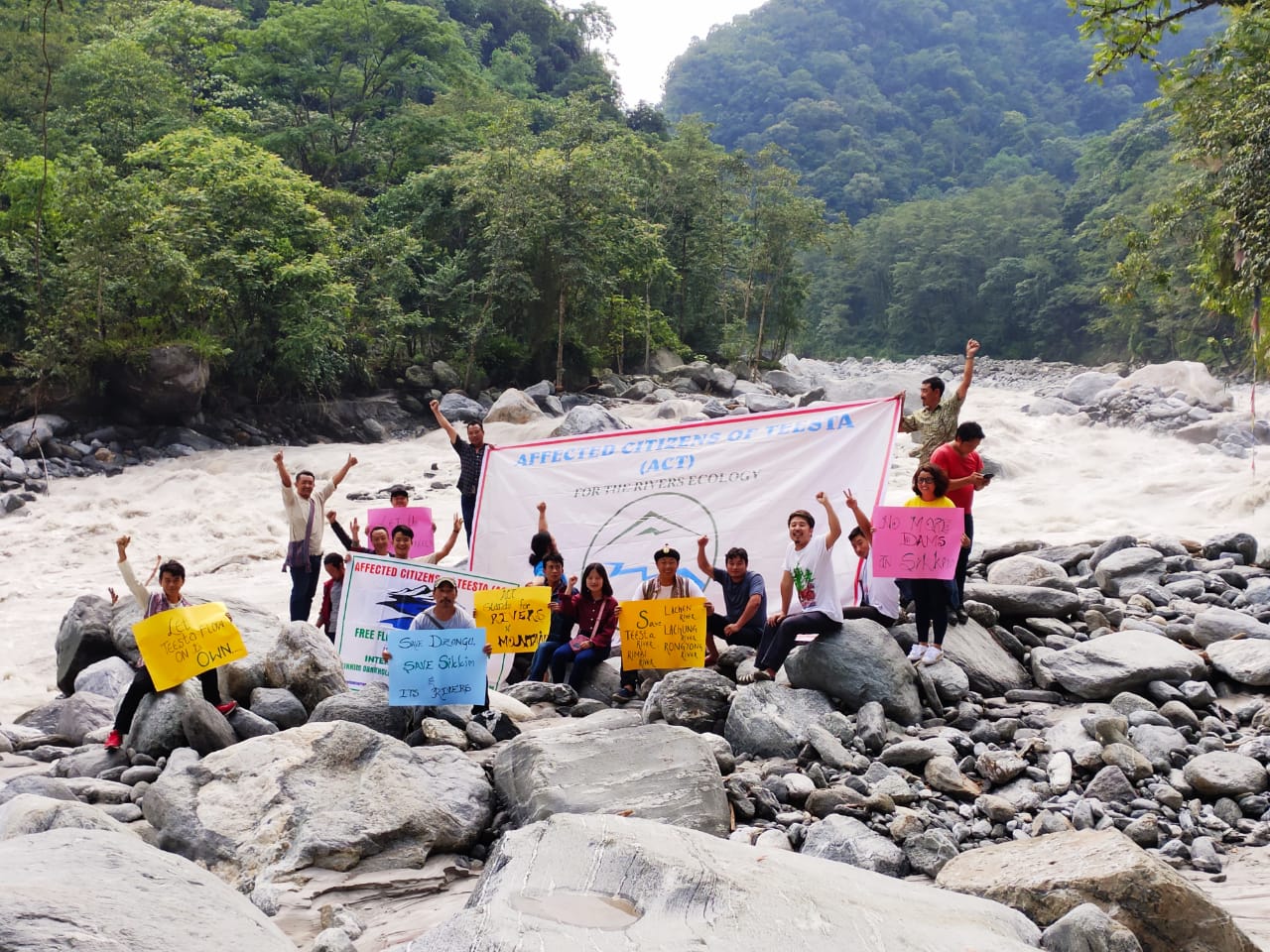By: Ayesha DSouza, South Asia Program Coordinator & guest writer Melanie Scaife
Mayalmit Lepcha grew up listening to the sounds of the Rongyoung River, which flows past her village in Dzongu, in the Indian state of Sikkim. This tiny state lies in the heart of the Himalayas between Nepal, Bhutan and Tibet, and is a place of exceptional natural beauty. It is also home to the Indigenous Lepcha people, who have lived here for centuries.
“In our culture, in our tradition, in our rituals, we recite the name of this river, the river Rongyoung, a tributary of the Teesta, which originates from Mount Kanchenjunga,” Mayalmit explains. “As animist nature worshipers, we believe we are created from the clear pure mountain snow of Mount Kanchenjunga, and that after we die, our soul travels back through river Rongyoung. That is why the river is sacred for the Lepcha community.”
A river silenced
It’s hard to fully comprehend then, how it must feel for Mayalmit and her community to witness a river so revered fall silent, the once free-flowing Teesta and its tributaries now choked by hydropower developments built over the past 30 years, among them two mega-dams in Sikkim State, the 1,200 MW Teesta Stage III and the 510 MW Teesta Stage V. Mayalmit lists the projects off one by one; all, she says, are an act of desecration for the Lepcha people—and environmentally unsustainable.
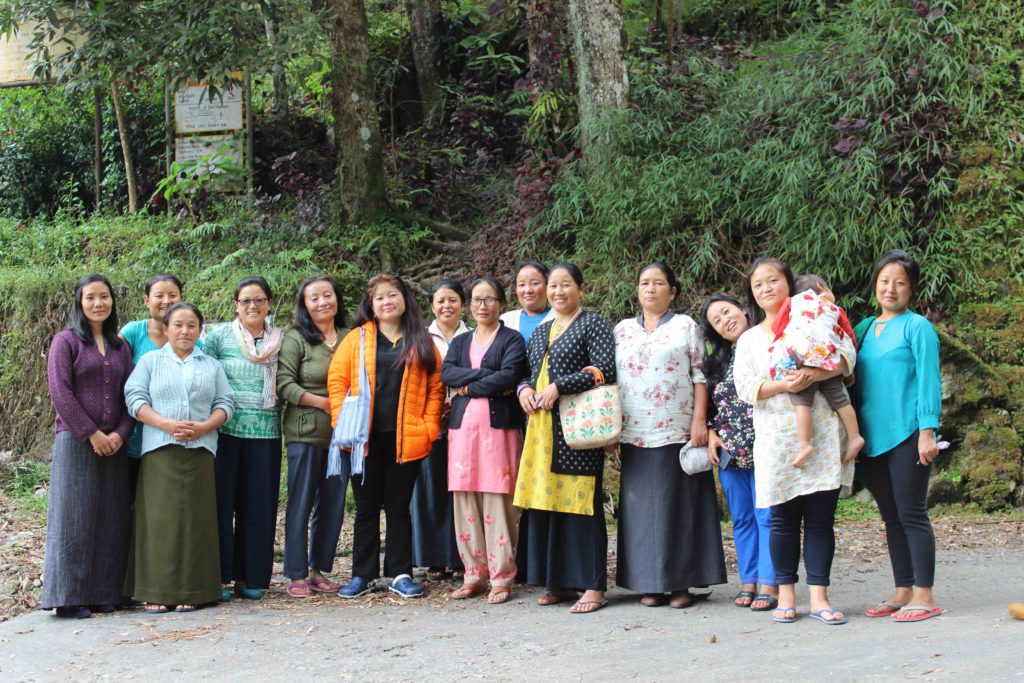
“We only have an eight-kilometre stretch of free-flowing river remaining in the whole of Sikkim—this is the only part where we can we hear the Teesta River flowing. This is where my house is, where my village is,” Mayalmit says. It’s also where a new dam, the 520 MW Teesta Stage IV, is slated for construction, and Mayalmit is doing all within her power to stop it.
“The river Teesta, it cannot raise its voice—it has been choked—but I can.”
Affected Citizens of Teesta
For the past 14 years, Mayalmit has worked tirelessly as a volunteer for an organization called the Affected Citizens of Teesta (ACT), which is fighting to protect the Lepcha’s ancestral lands from hydropower projects—developments they consider a major threat to their environment, community, and culture.
“I started my activism to fight these dams early. I was in my first year of college, and we had a hunger strike, we protested peacefully, but many college students were arrested. It was such a difficult time, but I don’t feel any regrets. All this struggle we have had to go through has really made me strong.”
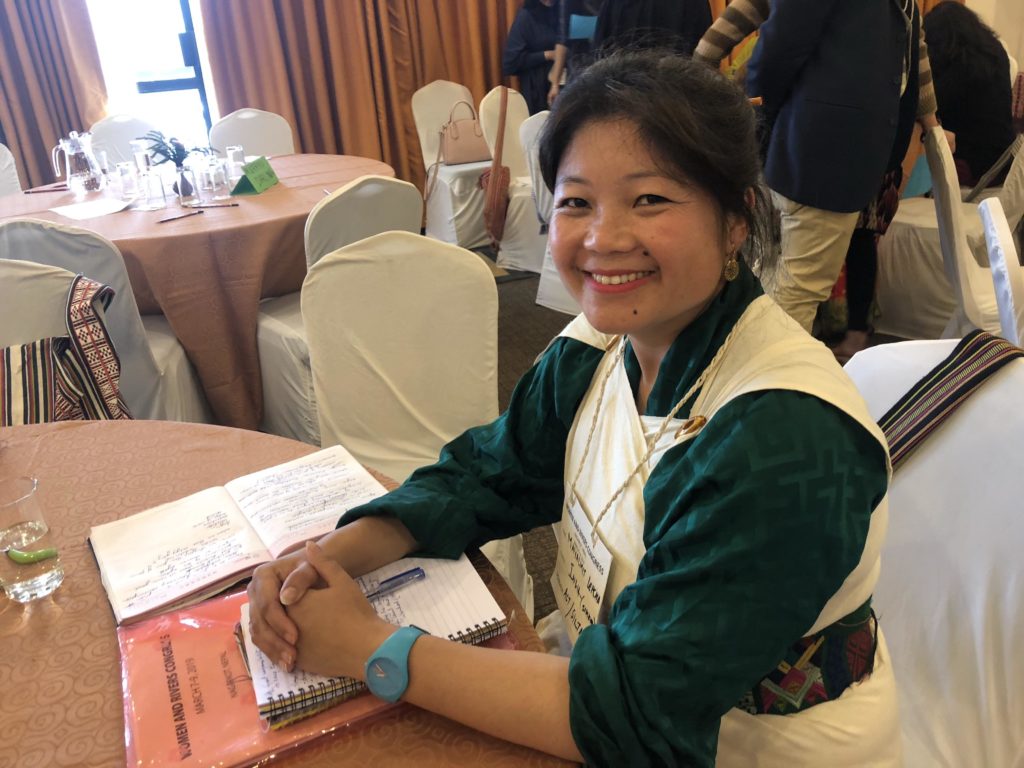
Vocal community opposition—including from ACT—is credited with successfully stopping four hydropower projects from going ahead in Sikkim. Mayalmit believes this is cause for hope, not just for the Lepchas, but for everyone whose lives are connected to the Teesta River, which winds its way through the Indian states of Sikkim and West Bengal before entering Bangladesh, where it joins the Jamuna (Brahmaputra) River, and emptying into the Bay of Bengal.
“The dams’ impacts are going to affect everyone in Sikkim, West Bengal, Bangladesh. We live in a very fragile environment and to have some 30 dams in a small area, experts tell us this is beyond the carrying capacity of the river, and that we will have a disaster in the future.”
The natural world out of balance
These disasters have already begun, with the people of Sikkim witness to several flash floods, landslides and earthquakes, which are increasing in frequency and severity. Mayalmit attributes many of these “natural” disasters to the concentration of hydropower dams on the Teesta, which have aggravated the river’s existing propensity for flash flooding and further destabilized the surrounding valley, which was already prone to landslides. Add to this the impacts of climate change in the region—rapidly melting glaciers, less snowfall, drying streams and springs—and it’s a stark reminder, if one were needed, that the natural world is out of balance.
Mayalmit is fearful of what is to come, but she draws strength from her spiritual beliefs and her community, particularly her fellow women, who have been instrumental in the campaign to keep the Teesta River free-flowing.
“Let the river bless them”
“In my village, the women are united and the strongest in Dzongu. If we organize a meeting or protest, the women will work in advance, cutting fodder for their cattle for two, three days, then putting it in a store so that they can attend. I think we underestimate the women folk in the village, they have more information, are more aware of what will happen when the dams come—for me that’s inspiring.”
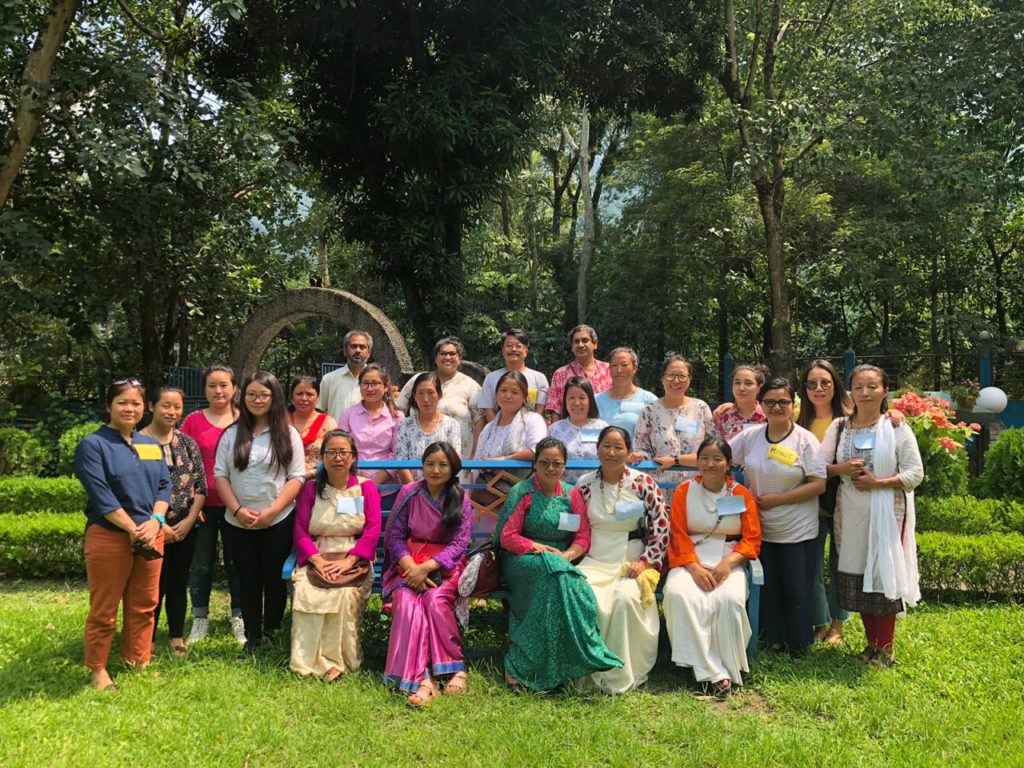
“My mother is an inspiration for me, too. She does not tell me to get married, or get a government job, to settle down. She sees what I am doing is for the whole present and future generation. She and her friends, they weren’t educated—we are the first generation to get an education, so they want us to be their voice.”
While education has been a contributing factor to women’s rising participation in the campaign to save the Teesta, Mayalmit also believes it comes down to perseverance and a willingness to fight. “We’ve been jailed, we’ve been victimized, the government terrorizes us. We are not afraid of anything to save our holy land, Dzongu. In India, in the largest democracy in the world, we have freedom of speech, so we will always try to fight back.”
And so, the fight goes on, and the future feels full of uncertainty—but of hope and possibility, too. “The Rongyoung River will give inspiration to our Lepcha poets again, who have written songs and stories about the river,” muses Mayalmit. “Let the river bless them. Our ancestors have passed on the river to us and it’s our responsibility to leave the river undisturbed, to keep it safe, and pass it on to the next generation.”
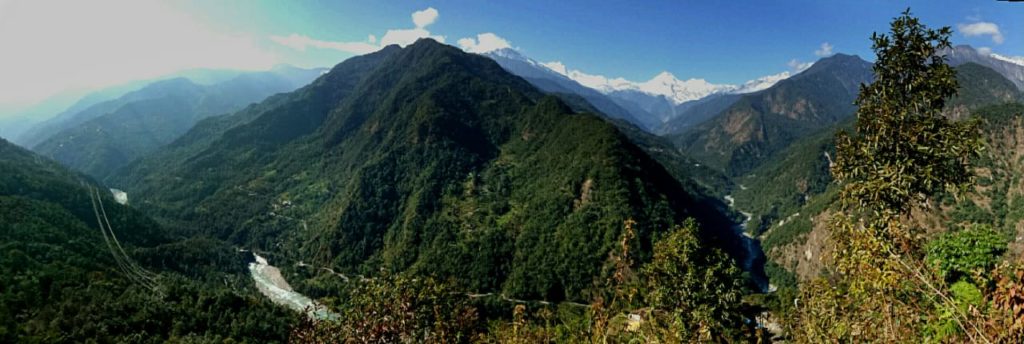
International Rivers’ South Asia program is part of the regional Transboundary Rivers of South Asia program. Supported by the Government of Sweden, TROSA is a collaboration with Oxfam, IUCN, ICIMOD and many local organizations that works on some of the more complex rivers in South and Southeast Asia: the Ganga, Brahmaputra and Meghna river systems, including their tributaries such as the Teesta, and Asia’s last last free flowing river, the Salween. TROSA works to promote improved cross-border governance of these transboundary rivers, support women’s leadership, and advance energy alternatives to large hydropower.
Featured image: Youth activists representing the Affected Citizens of Teesta Movement sit by the River Rongyoung, a sacred and major tributary of the River Teesta | Photo by Affected Citizens of Teesta (ACT)

